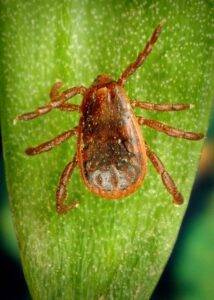Treatment and Vaccine for Lyme disease
Lyme disease is the most common vector-borne disease in the United States. Lyme disease is caused by the bacterial species known as Borrelia. It is transmitted to humans through the bite of infected blacklegged ticks. Generally, symptoms of lyme disease include fever, headache, fatigue, and a characteristic skin rash called erythema migrans. If left untreated, infection can spread to joints, the heart, and the nervous system. Lyme disease is diagnosed based on symptoms, physical findings (e.g., rash), and the possibility of exposure to infected ticks. Laboratory testing can be helpful when it is used correctly and performed with validated methods. Most cases of Lyme disease can be treated successfully with a few weeks of antibiotics.

Treatment for Lyme disease:
1.Most people will have resolution of the infection with one course of oral antibiotics (usually doxycycline unless an individual is allergic to it, then an alternative antibiotic, such as amoxicillin is recommended.
- For those people who get the classic bulls eye rash (called Erythema migrans), it will resolve without antibiotic therapy, but treatment will speed resolution. Treatment can also be beneficial in avoiding late complications of lyme disease.
Antibiotic recommendations: doxycycline twice daily for 10 days (first line treatment)
Alternative options are: amoxicillin or cefuroxime. For individuals with an allergy to beta-lactams or tetracyclines, azithromycin can be used to treat lyme disease.
Lyme infection in the brain is called neuroborreliosis. Neuroborreliosis can be in the form of inflammation of the lining of the brain tissue (meningitis). It can also be in the form of an irritated nerve that causes pain down the leg (radiculopathy). The choice of oral antibiotics versus intravenous (iv) antibiotics depends on the individual, cost, and possible side effects of iv therapy. In general, IV antibiotic therapy is initially used if a patient is hospitalized. The primary iv option is ceftriaxone with a duration of 14 to 21 days. The oral option for treatment is doxycline, for a duration of 14 to 21 days (it is generally given for 21 days). It is usually favored to give the longer course of 21 Days or 3 weeks. The alternative choices are penicillin G and cefotaxime.
Lyme disease can also affect the heart. Lyme disease can cause inflammation of the heart muscle (carditis). Lyme disease can cause the heart to beat more slowly (heart block) and this is potentially life-threatening. The initial recommend therapy is IV therapy with ceftriaxone. Some people require a temporary pacemaker for slow heart rate. In general, heart block usually resolves within 3 to 7 days of antibiotic therapy. The antibiotic course is 14 to 21 days, depending on the individual and clinical improvement.
When lyme disease affects the joints it is called lyme arthritis. The initial treatment recommendation is doxycycline for 28 days, or IV ceftriaxone. Other alternative treatment options are amoxicillin and cefuroxime. If symptoms recur, treatment can be repeated with an oral course of antibiotics for another 28 days. Some patients can be observed instead of treating a second time. This depends on how severe an individual’s symptoms are.
Keep in mind that it is rare to have an active infection after adequate initial treatment between 10 to 28 days.
If symptoms persist for greater than 6 months (it is called “post-treatment Lyme disease syndrome-PTLDS). In this case,it is recommended to NOT prescribe additional antibiotics as it is unlikely to offer any benefits. The first approach is to evaluate the person for alternative reasons for their symptoms. The next step is to construct a plan for how to help these patients. The strategies used in patients with chronic fatigue syndrome of fibromyalgia seems to help patients with PTLDS. Some of the strategies used include strategies: cognitive-behavioral therapy, pacing protocols, low-impact graded exercise, and sleep hygiene.
Medications that might potentially help patients who are diagnosed with PTLDS in which other strategies did not work are: antidepressants and specific pain modifiers such as pregabalin and gabapentin.
Is there a vaccine for lyme disease?
No! There are no available vaccines for Lyme disease at this time.
There was a previously marketed vaccine called LYMERix that was discontinued by the manufacturer in 2002 due to low consumer demand.
There are current and ongoing clinical trials of new vaccines for Lyme disease. Pfizer and Valneva have a lyme disease vaccine candidate that is currently in Phase 3 human trials.
There is also a human monoclonal antibody that was developed by the University of Massachusetts Medical school’s MassBiologics. It can potentially be used as a pre-exposure prophylaxis for Lyme disease. This monoclonal antibody would provide seasonal protection against lyme disease. It would be given as a single injection, once a year at the beginning of tick season. However, human trials have not been started so this potential treatment is unlikely to be an option in the near future.
Stay tuned for more health information and follow me on pinterest and Youtube for videos on various health conditions.



Leave a comment